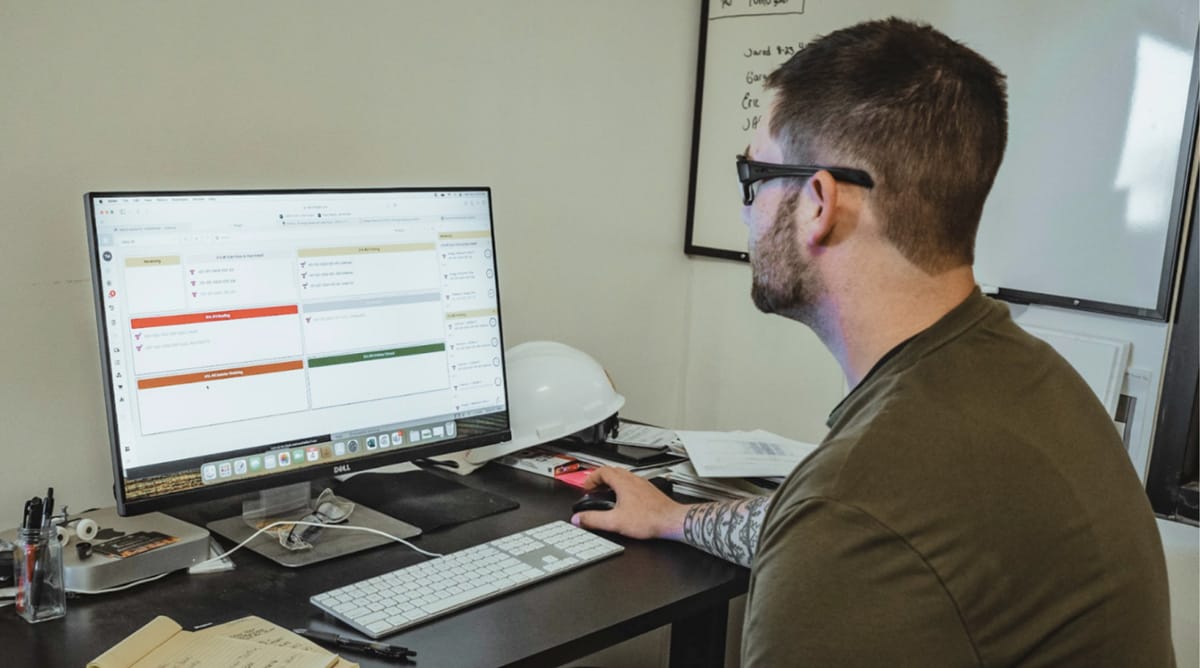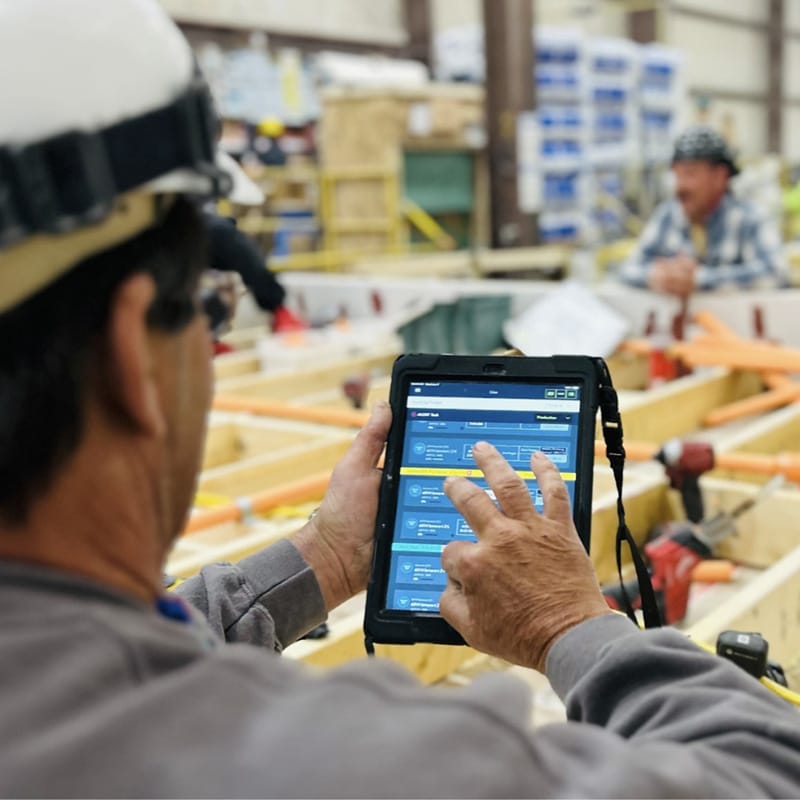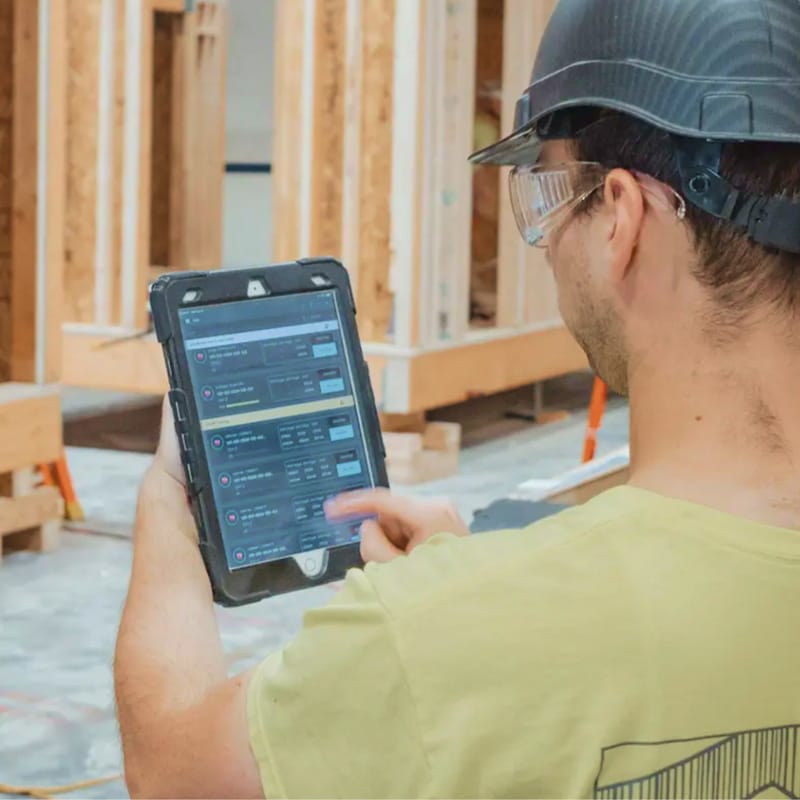The How-To Guide For Prefab Leaders: Actively Manage Your Prefab Schedule
In this How-To Guide for Prefab Leaders, we review how to generate a schedule forecast and factory production plan and how to manage the prefab project cycle to ensure that you are hitting the schedule targets. We review how to leverage technology like Offsight to manage prefab project delivery in real-time and to track factory production, live, to ensure you are meeting your deadlines. If production falls behind schedule, we will review how to take proactive steps to accelerate work and how to better understand the cost implications of these corrective actions.


Generate Your Prefab Project Schedule
We begin by generating the project schedule and factoring in labor capacity constraints. These constraints also apply to the unique prefabrication process for the products you are assembling. With Offsight’s pre-built prefab planning, forecasting and estimating templates, you can define your prefabrication process by your product type (e.g. EIFS panels, bath pods, volumetric modules, etc).
Once each process step is identified and hours are assigned to complete each process, you can then add your current labor resources and capacity constraints to generate an accurate factory production schedule with forecasted start and end dates. Projected delivery dates by collection of modules or bundles of panels (e.g. 1st floor, 2nd floor, etc) can then be provided to other project stakeholders to coordinate on-site installation.


Compare Real-Time Production with Your Planned Schedule
After building your forecasted schedule, you leverage technology like Offsight to track your progress from the shop floor, against your prefab schedule. As operators actively work on products on the shop floor and products move through assembly you can actively tracks status in real time through a mobile app to gain visibility. In order to compare your real time progress against your planned project schedule, you will need to overlay your live production Gantt over your plan.
With Offsight’s Schedule and Analytics Dashboard, you can automatically pull a real time production Gantt chart for all live products on the floor and track when they start prefabrication. It’s important to also track the production status of all live products in the overall assembly, including which processes were completed e.g. framing, and which are still pending and where these processes stand against their forecasted start and end dates.
Identify Schedule Delays and Correcting Course
By automatically linking forecasted product start and end dates, in a digital tool like Offsight, by process and workstation, you can see how each individual product or module is tracking against your plan. Thereby you could track a large modular project by individual module or collection of modules, e.g. floor 1, and immediately identify when production is falling behind your schedule.
In this manner all operators, team leads and supervisors can see when products and processes need to be completed to achieve your schedule targets. If updates to your forecasted schedule are needed to account for delays, a digital solution will allow you to easily move the target start and end dates in your plan. This will ensure you are always tracking your progress and managing prefabrication against your overall project schedule.
By leveraging technology like Offsight to communicate updates to all stakeholders in real time, you can enable collaboration and coordination throughout the project lifecycle.
More from Modular Advantage
AI, Faster Sets, and Automation: The Future of Modular is at World of Modular
While the modular building industry has long known that it can be an effective solution to increase affordable housing, the word is slowly spreading to more mainstream audiences. Three presentations at this year’s World of Modular in Las Vegas hope to provide insight and direction for those seeking a real solution to the crisis.
An Insider’s Guide to the 2025 World of Modular
The Modular Building Institute is bringing its global World of Modular (WOM) event back to Las Vegas, and with it comes some of the industry’s best opportunities for networking, business development, and education. Over the course of the conference’s four days, there will be numerous opportunities for attendees to connect, learn, and leverage event resources to get the most out of the conference.
Affordable Housing Now: The Industry’s Best Bring New Solutions to World of Modular
While the modular building industry has long known that it can be an effective solution to increase affordable housing, the word is slowly spreading to more mainstream audiences. Three presentations at this year’s World of Modular in Las Vegas hope to provide insight and direction for those seeking a real solution to the crisis.
Opportunities for Innovation in Modular Offsite Construction
Modular Offsite Construction has already shattered the myth that it only produces uninspired, box-like designs. Architectural innovations in module geometry, configurations, materials, and products make it possible to create visually stunning buildings without sacrificing functionality or efficiency.
Safe Modular Construction with Aerofilm Air Caster Transport
In collaboration with Aerofilm Systems, Heijmans developed innovative skids using air caster technology for moving modules easily and safely. These pallets are equipped with an auto-flow system, making operation extremely simple.
Miles, Modules, and Memes: Building a Modular Network One Flight at a Time
At the end of the day, social media is just another tool for building connections, and like any other tool, needs to be used skillfully to work properly. Use social media thoughtfully, and it will open doors to real opportunities and relationships you didn’t even see coming.
Falcon Structures: Thinking Inside the Box
Some of Falcon’s latest projects include creating container solutions for New York’s Central Park and an East Coast professional baseball team. More and more, Falcon is shipping out container bathrooms and locker rooms to improve traditionally difficult work environments, like those in oil and gas or construction.
UrbanBloc—From Passion to Industry Leader
UrbanBloc specializes in three main categories or markets – what they call “Phase 0” projects, amenities, and urban infill. Clients are often attracted to shipping containers because from a real estate perspective they are considered an asset. Having the flexibility to move and transport these assets allows owners to respond to different circumstances in a fluid manner that they can’t get with standard construction.
The Hospitality Game-Changer
“Hospitality is about more than just providing a service – it’s about delivering an experience,” says Anthony Halsch, CEO of ROXBOX. “And that’s where containers thrive. They allow us to create spaces that are unique, efficient, and sustainable.”
Container Conversions Counts on Simplicity to Provide Critical Solutions
Container Conversions has fabricated and developed thousands of containers for varied projects, including rental refrigeration options, offices, kitchens, temporary workplace housing, and mobile health clinics.










